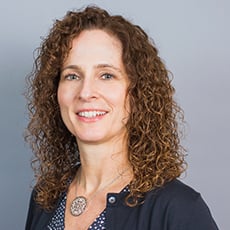
Performance Management Power Up: 3 Easy Ways to Make Your Communications Shine
Looking to make a big score with your talent management efforts? Talent management is a central part of many companies’ HR strategies, yet it doesn’t always receive the attention it deserves. There are a lot of priorities competing for employees’ attention. Without clear goals, a structured process, effective technology, and leadership support, HR departments may struggle to get employees engaged in the performance management process.
We worked with one of our clients, a U.S. professional sports league, to create the playbook: 3 ways to power up your performance management communications. Together, we put their employees back in the game when it comes to setting goals, completing self-evaluations, and having meaningful discussions with their managers. This 3-point plan can power up your organization’s performance management process too.
It’s a Game Changer
An effective performance management process is important because it sets clear expectations, identifies employee strengths and weaknesses, encourages professional development, and ensures accountability. As employee goals better align with company objectives, overall organizational performance improves as well.
Research by Gartner HR consulting shows that when employee goals are better aligned with organizational objectives, employee performance can increase by up to 22%. It’s a win-win for employees and the organization. Jason Adwin, who leads Segal’s Compensation and Career Strategies practice, says, “We’ve seen this happen with many of our projects. Once an employee can connect their individual goals with their department and, ultimately, the organization, it becomes clear how their actions directly contribute to the success of the company. That’s very motivating.”
With over 90% of their employees completing a 3-step performance management process twice a year, our client is pleased with the organization’s participation rates. This is how they went from a lack of clarity around individual performance and the goal-setting process to employees and managers having discussions about goals and professional development several times a year.
Make Communications a Key Player on Your Team
In the case of this client, communications played an essential role in gaining employee buy-in and participation.
At the outset, focus groups clued in leadership about what rank-and-file employees were experiencing within the current performance management process. Those results—and the conversations that followed—were the catalyst for top-down changes to how the organization viewed and deployed their process.
Once the new process was put in place, communications made all the difference in how employees received the program. From a regular cadence of emails to town halls and in-person cascading opportunities, the communications contributed to helping each employee understand their role within the process. This engaged employees and their managers in career conversations early, which helped drive behavior changes for future performance management cycles.
How to Create Successful Performance Management Communications
Set clear objectives and goals for your program. Our client learned that employees wanted to have performance discussions more than once a year. This was an important consideration, and they made the decision to have 3 performance management cycles in the first year of their new program.
The path to success begins with identifying your key objectives and goals that you want to achieve through your performance management program. An important part of this process is listening to employees to learn what’s working and what’s not working. Senior leaders and human resources professionals usually have a pulse on the employee point of view, but it’s a good idea to check that before going too far down the planning path. The results could help you focus more on a specific area.
It’s essential to keep listening and remain flexible too. In the second year, based on employee and manager comments and with a year of experience, our client reduced their performance management cycles from 3 to 2 cycles per year.
Integrate the experience. While a lot of effort usually goes into developing a comprehensive performance management program (performance evaluation criteria, feedback mechanisms, and development plans), it’s just as important to consider what the experience will be when employees and managers use the new program. Using a technology platform to streamline the performance management process can make it more efficient, but it must be easy and intuitive.
Our client found this helpful in developing their training and support resources. They rolled out online forms and a manager dashboard that tracks completion rates and progress across groups. Managers can see real-time reports for their groups and take action to help their teams complete the process. Employees have year-round access to their goals and can adjust as projects change or are completed or as new projects are started. If they need help, training and resources are just a click away.
Communicate and train. Our client used a cascading process to ensure that everyone understood the goals and expectations of the program, as well as their roles and responsibilities.
The key was to clearly communicate the new performance management program to all employees and to provide training to managers and employees on how the program would be implemented. Multiple training sessions, performance management office hours, and monthly training camp topics provided an ongoing opportunity for communication and feedback throughout the process to ensure the program’s success.
For your programs, taking the time to develop a clear strategy can help you understand the big picture around how employees perceive change and what it takes to bring all players into alignment.
We’re proud to work with organizations that value their people. If you want to learn more, we’d love to talk.
Ettore Toppi, Senior Consultant, was instrumental in developing the content of this post.
Read Next
Work with Us
We partner with organizations that value their people first. Let’s talk.

Diane Swisher, VP Senior Consultant, has more than 15 years of experience helping organizations develop and execute employee communications strategies and campaigns.
